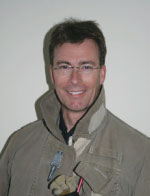
Features
Structural
Training
Fire IQ: Promoting consistency in fire-service terminology
Departments and firefighters across Canada share a common goal of protecting life and property. What is not always so common is the terminology that defines their tactics, apparatus, and equipment.
April 11, 2008
By Peter Hunt
 Departments and firefighters across Canada share a common goal of protecting life and property. What is not always so common is the terminology that defines their tactics, apparatus, and equipment.
Departments and firefighters across Canada share a common goal of protecting life and property. What is not always so common is the terminology that defines their tactics, apparatus, and equipment.
In this column, we’ll attempt to raise your fire fighting intelligence quotient and standardize firefighter knowledge of common (and not so common) terms.
Got an interesting, unique or favourite procedure, rig or tool of your own? Then share it with us.
In the meantime, we’ll provide a few we’ve learned over the years.
Autoexposure
Sometimes referred to as autoextended fire or lapping, a structure fire often self ventilates as windows give way and flames spread vertically along exterior walls. Windows above the floor of origin, and, more often, overhangs, are quickly compromised, leading to the spread of fire to upper floors and attics or cocklofts.
Contents fire/structure fire
The late Francis L. Branigan (Building Construction for the Fire Service), one of the fire service’s greatest proponents of firefighter safety and survival, was adamant that members recognize and distinguish between a fire that is consuming combustibles in a room and one that is destroying the building’s structural support system.
He believed that once recognized, command must broadcast “this is now a structural fire.” In this modern era of lightweight building construction, such a warning to firefighters has never been more critical.
Ventilation
Everyone remembers the definition from drill school, but how many recall that there four main reasons to ventilate a building?
To save lives (civilian and firefighter);
To aid in advancing the initial attack hoseline;
To reduce damage caused by the fire;
To reduce (and hopefully eliminate) the effects of flashover, backdraft, rollover, smoke explosions, etc.
In all cases, ventilation must be properly timed, co-ordinated and executed.
We’ll take a closer look at what you’re ventilating for in a future column.
Controlling the door
Occasionally, despite best efforts to execute a co-ordinated attack, the vent team may encounter a locked door to the unit of origin before the hose team arrives with the water. This must not delay the forcing of the door in a controlled manner. Heavy smoke and fire conditions may be encountered so a short piece of webbing around the doorknob and a latch strap to prevent the door from relocking should be used. In the event of light smoke conditions, a quick check of the area immediately inside the door may be possible, but contamination of the common hallway must be prevented by rapidly re-closing the door until a charged hose line arrives.
Actual and practical pump pressure
I’ve always taught my pump operators that there are two answers to every hydraulics/friction loss question. Naturally, there’s the “correct” pump pressure, based on the required nozzle pressure, friction loss in the hose and elevation. Then, there’s the practical pump pressure, based on all those intangible factors that are unique to every fire.
Actual pressures should be reserved for exam questions and properly staffed hose stretches at well-involved fires.
Practical pressures are reserved for that “pot on the stove” or those times when staffing will not allow for sufficient firefighters to deal with the resulting reaction forces. The bottom line: pump operators must always know the correct pump pressure so they can quickly adjust for factors presenting at their next fire.
Straight streams versus solid streams
One of the oldest debates in the fire service surrounds the effectiveness of fog nozzles and solid bore nozzles. Most of us prefer the one we were raised with, and unless you’re the chief of purchasing, you don’t get to choose anyway.
Straight streams are those produced by fog nozzles and are, essentially, a very narrow fog stream composed of tiny water droplets separated by air.
A solid stream is produced by a smooth bore nozzle and forms a solid cylinder of water leaving the tip.
Fans of solid streams claim they can
create larger, more effective water droplets by deflecting the stream off of ceilings or walls, compared with straight stream droplets that may be prematurely vaporized in a high-heat environment.
Fog nozzle guys enjoy the flexibility of being able to choose the appropriate pattern.
Peter Hunt, a 28-year veteran of the Fire Service, is a Captain with the Ottawa Fire Services Suppression Division.
Print this page
Advertisement
- Between Alarms: Learning lessons from firefighters’ best friend
- Guest Column: Earning your leadership stripes